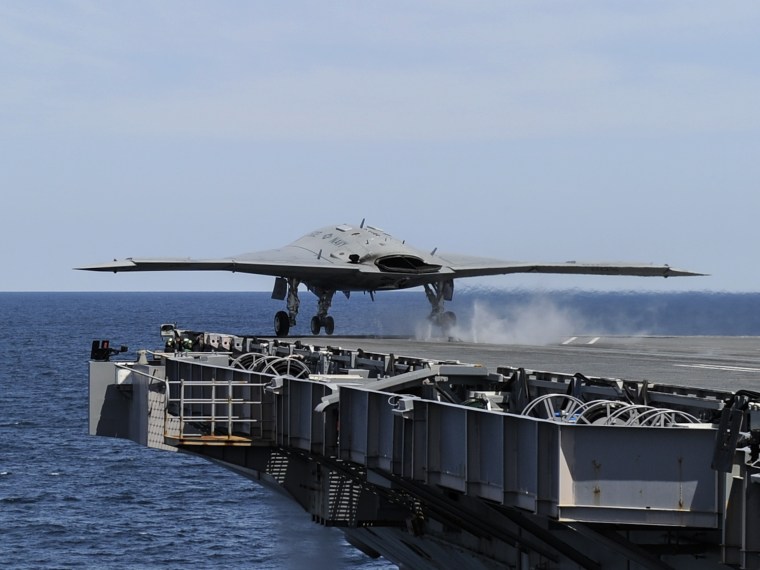The U.S. Navy's X-47B drone has become the first unmanned craft to complete a catapult launch from the flight deck of an aircraft carrier. Today's demonstration took place on the USS George H.W. Bush, off the coast of Virginia.
After a flight of an hour and five minutes, the drone touched down at the Naval Air Station Patuxent River in Maryland.
Want more pictures of the first robot aircraft carrier take-off? Click here.
This drone didn't land on the carrier, nor has any, to date. A similar X-47B completed a carrier-style landing at Patuxent River earlier this month, catching a length of heavy cabling on the tarmac and coming to a short stop after touchdown, as it might on a ship deck.
"Today we saw a small, but significant pixel in the future picture of our Navy as we begin integration of unmanned systems into arguably the most complex warfighting environment that exists today: the flight deck of a nuclear-powered aircraft carrier," the Navy's "Air Boss," Vice Admiral David Buss said in a statement.
The quirky design of the drone allows for its wings to be folded in, making it easier to store on an aircraft carrier.
Robot systems for war are getting more independent, and the X-47B is part of that trend. Like the Predator and Global Hawk, the X-47B will have a longer flight time than manned aircrafts, but an improved landing system, better suited for tricky carrier landings.
The X-47B drone is the star of the U.S. Navy's Unmanned Combat Air System program. Later this summer, Northrop Grumman and the Navy will finally test a landing onboard a carrier. This month's launch and landing are run-ups towards that final feat.
Nidhi Subbaraman writes about technology and science. Follow her on Facebook, Twitter and Google+.
